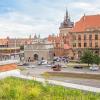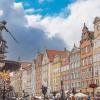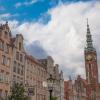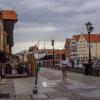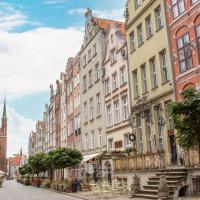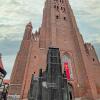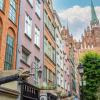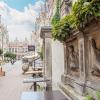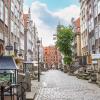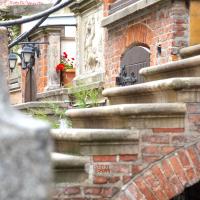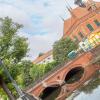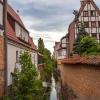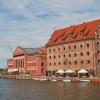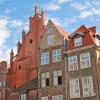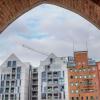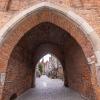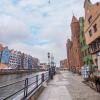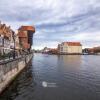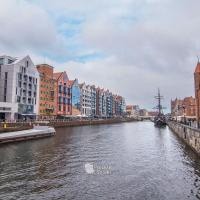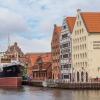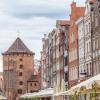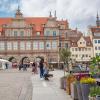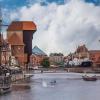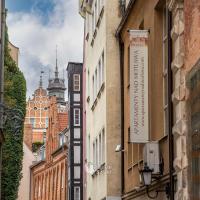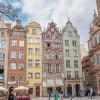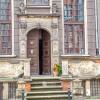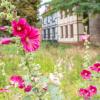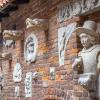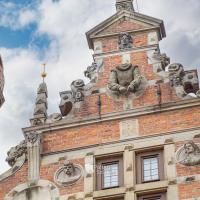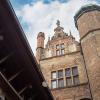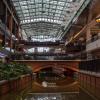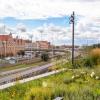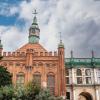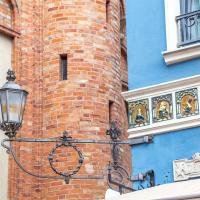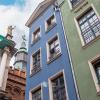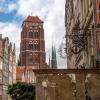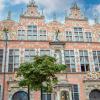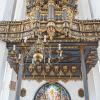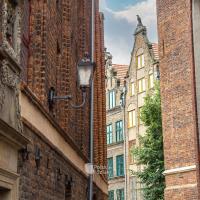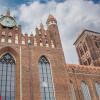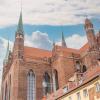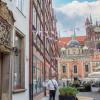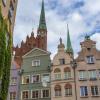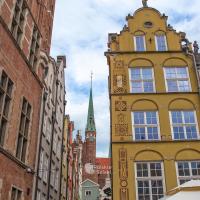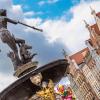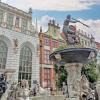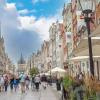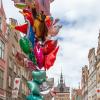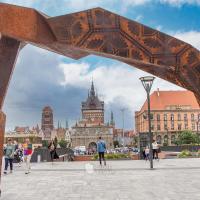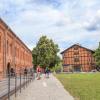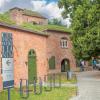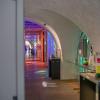Gdansk. Attractions worth visiting
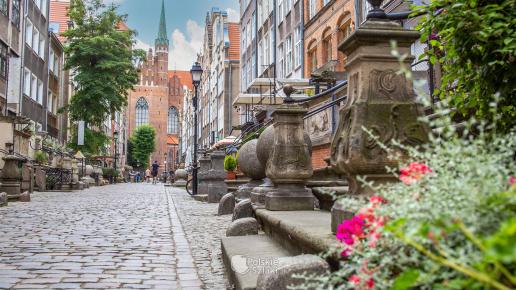
Gdansk is a historic, thousand-year-old Hanseatic center that is the capital of Eastern Pomerania. It is located in the Pomeranian Voivodeship, on the Bay of Gdansk. Gdansk captivates with its beautiful, stunning architecture and unusual atmosphere. It has always aroused the admiration and admiration of visitors, mainly because of its wealth. That is why Gdansk is visited in large numbers and willingly by tourists from all over Europe and beyond, and this is facilitated by convenient air, land and sea connections even with the remotest corners of the globe. In the past, representatives of various nationalities came here, and many of them settled in Gdansk permanently. Among them were prominent architects, whose traces of activity we can still admire today on the streets of Gdansk. Together with modern GdyniaandfamousSopotGdanskcreates an extremely attractive Tricity for tourists.
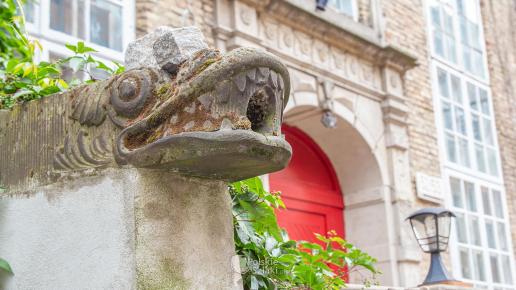
Attractions in Gdansk
It is impossible to describe the beauty of this city, you simply have to come here and see it with your own eyes. Beautiful in summer, wonderful in winter when it adorns itself with lights. It is also one of the greenest cities in Poland. It is overgrown with magnificent forests, moreover, a landscape park has been created, as well as nature reserves and monuments. We've visited Gdansk a few times and as much as possible, we've tried to get to know its attractions well, so read our guide and get to know the best attractions of Gdansk! First we present you with an inventory of these places, and below I describe them in more detail. And if you want to find an even more detailed description, click on the linked (blue) name of the attraction, which takes you to a detailed description. Below the descriptions of the attractions you will find a suggested walking tour of Gdansk with the route on the map.
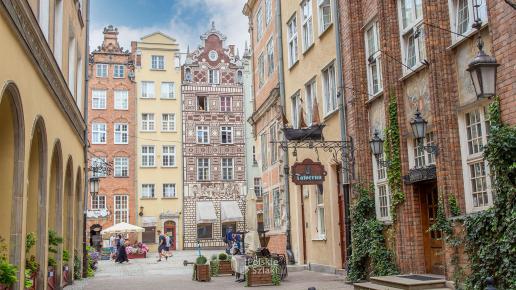
1. Mariacka Street in Gdansk
Mariacka Street is the heart of Gdansk, maybe not everyone directs their first steps here, but it is the place that captivates me the most in all of Gdansk and that I highly recommend to you. While strolling through this city, you simply cannot miss it. The street is one of the shortest streets in the Main Town, but it is amazing, enclosed by the block of St. Mary's Church on one side and St. Mary's Gate on the other. Unfortunately, St. Mary's Street in Gdansk is not original, because, like all of Gdansk, it suffered heavily during World War II. It is, however, carefully reconstructed and is the only street in Gdansk that still presents a set of distinctive forecourts that once adorned many of Gdansk's streets. Today, in addition to St. Mary's, they can be seen, for example, on Piwna Street by several tenement houses or on the secluded Ogarna Street. At the forefronts you will often see on St. Mary's you will see gutters - decorative and charming ends of gutter spouts. Narrow facades, these flower-decorated lintels with gutters in the form of fantastic creatures and narrow cobblestones make it simply lovely here. Be sure to visit St. Mary's Street during your visit to Gdansk, especially since you can view, and whoever is richer can purchase, beautiful jewelry and other items made of amber - "Baltic gold".
Address: Mariacka Street, Mariacka Street, Gdansk
Z góry dziękujemy!
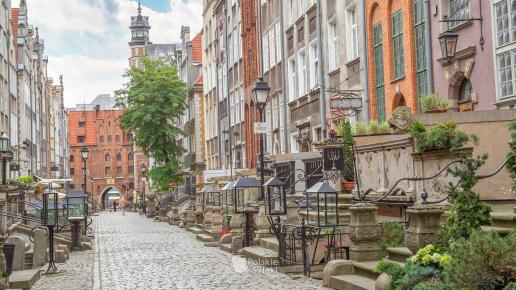
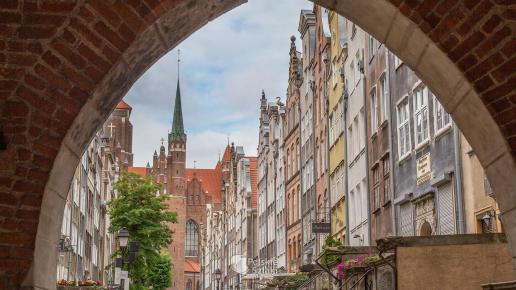
2. Deptak nad Motlawa and Żuraw in Gdańsk
Deptak nad Motlawa is Dlugie Pobrzeze (Long Embankment), starting behind the Green Gate, by the Green Bridge. It's worth walking here and crossing the bridge to admire the beautiful panorama of Gdansk, with its tenement houses, reconstructed granaries and ships sailing on the river. What strikes the eye here is the Crane standing at 67/68 Szeroka Street - it is the most distinctive building in the whole city and a symbol of Gdansk. It was the largest harbor crane in medieval Europe, used for reloading goods and erecting masts, and was also the city gate and harbor fortress. Standing on the Motlawa River, the Crane is a branch of the National Maritime Museum, as are the granaries on Olowianka and the ship Sołdek moored next to them.
Address: Deptak nad Motlawa, Dlugie Pobrzeze, Gdansk
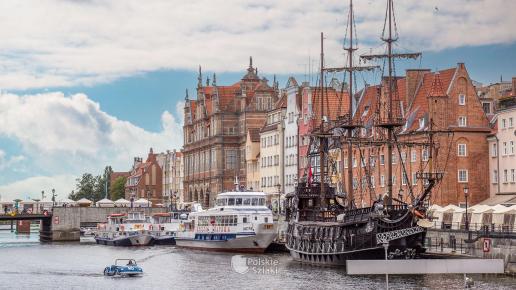
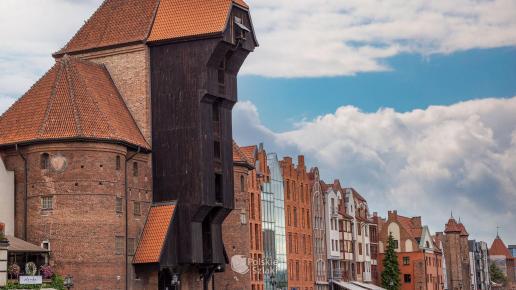
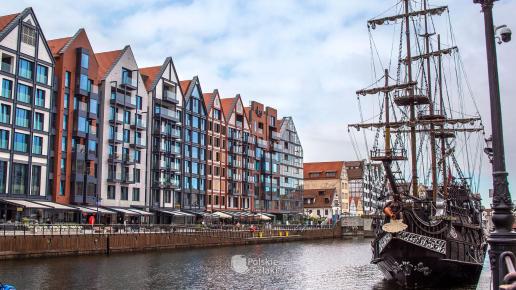
3. Dluga Street and Dlugi Targ Street in Gdansk
Dluga and Dlugi Targ streets in Gdansk are the city's most popular, beautiful streets, forming the Royal Route. Dluga Street runs from the 17th-century Zlota Brama (Golden Gate ) to the Town Hall, where Dlugi Targ begins, and leads up to the mighty Green Gate, built in Mannerist style in the 16th century. Both of these gates replaced earlier Gothic ones. The Royal Route continues along the Motlawa River under the Crane. It is on Dluga Street and Dlugi Targ that Gdansk's most magnificent buildings sit, such as the magnificent Main Town Hall dating back to the 14th century,the Uphagen House from the 18th century, open to tourists, Artus Court- a marvelous seat of merchant fraternities, and of course the popular Fountain with Neptune adorning Dlugi Targ since the 17th century. These are the most famous buildings, but each tenement here has its own history and attracts attention with its unusual decorations. It used to be a place of trade, and the wealthiest Danzigers lived here. Their wealth still surprises today, although the tenements are reconstructed after war damage.
Address: Trakt Królewski, Dluga Street and Długi Targ Street, Gdansk
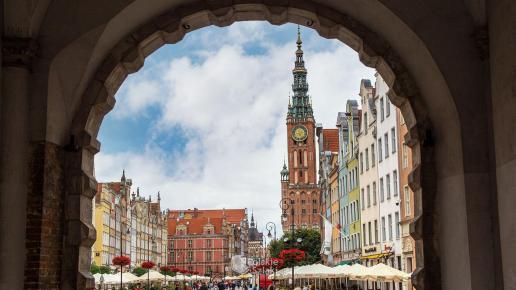

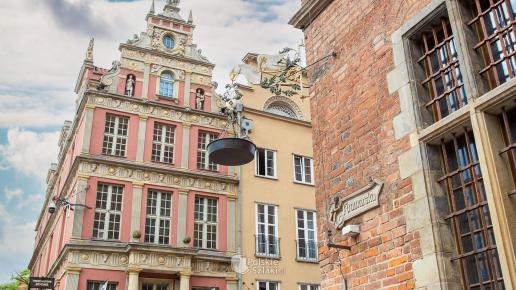
4. European Solidarity Center in Gdansk
The European Solidarity Center or ECS is a modern and fantastic place that was established in 2007 next to the famous Gdansk Shipyard. The center is dedicated to the fall of communism in Poland and all of Europe. It is an extremely profound interactive museum, where the words society, democracy or dialogue take on special meaning. The center has taken on a really large size and can be visited for hours, listening to an audio guide and browsing through the various multimedia available at the exhibitions. The youngest will also find their place here, in the multimedia educational room called the Fun Department. A café and restaurant await everyone. Meanwhile, on the roof of the ECS is an interesting vantage point overlooking the city and the cranes of the shipyard, whose famous gate is known throughout Europe and beyond. In front of the ECS, in Solidarity Square, stand tall three crosses with anchors - the Monument to the Fallen Shipyard Workers. They weigh almost 140 tons and are 42 meters high!
Address: ECS, pI. Solidarności 1, Gdansk
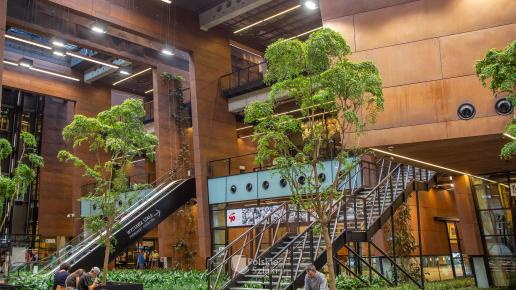
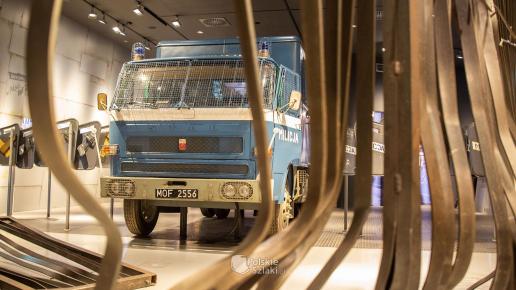
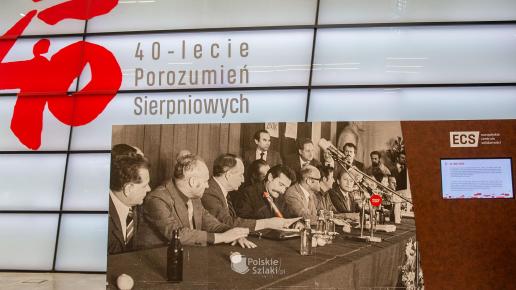
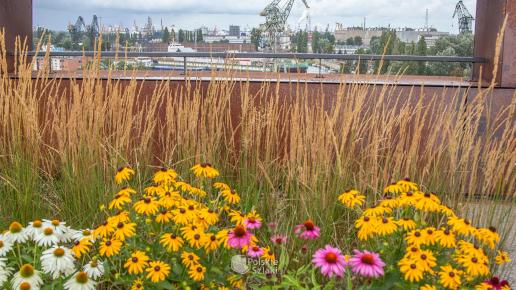
5. Hevelianum and Gradowa Mountain in Gdansk
Hevelianum is a great place for family recreation, where science, history and fun meet. In the buildings of the former fort, the youngest and a little older can learn many secrets of science, in the fields of physics, astronomy, mathematics or biology, and even ecology. Numerous interactive installations allow them to have fun and understand the laws of science at the same time. The entire Fort was built on Gradowa Mountain - the green island of Gdansk, hence it is both a great place to walk and admire the panorama of Gdansk. It is worth mentioning that you will eat deliciously in the local Carriage House!
Address: Hevelianum, 6 Gradowa Street, Gdansk
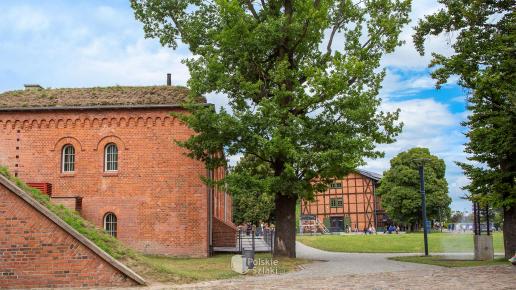
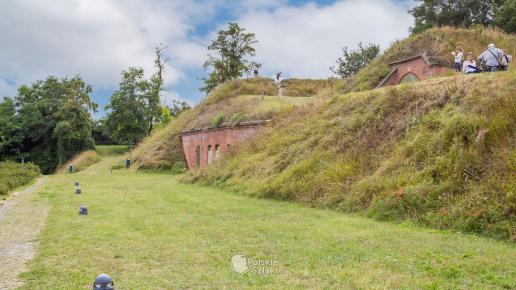
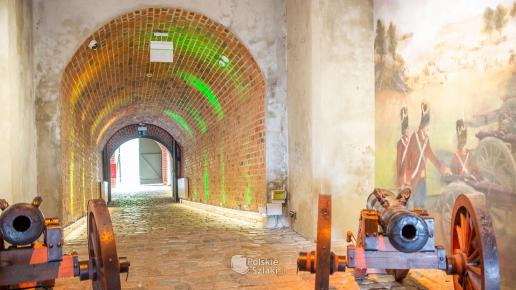
6. Olivia Star in Gdansk
Olivia Star has grown up in Gdansk Oliwa. It's a brand new building in Gdansk, which very quickly became famous all over Poland! It is 180 meters high, making it one of the tallest buildings in our country. This height alludes to the famous August 1980 events in Gdansk, while the architecture of the Olivia Star's top refers to the neighboring Olivia Hall. Impressively, at a height of 130 meters, on the 32nd floor of Olivia Star there is an observation deck, from which you can admire a wonderful panorama not only of Gdansk, but also of the Tri-City and the Baltic Sea. This place fills up especially at sunset, when the view is amazing. It's good to be here then! Admission to the terrace view is paid, it's cheaper if you book online. On the same floor as the Terrace View, located outside the building, there is a glass-roofed Vidokovka restaurant. I probably don't need to write where the name comes from. the views from here are all around the building, to taste specialties with such views is sheer joy 🙂 One floor up, on the 33rd level, is the even more exclusive Arco by Paco Perez restaurant.On the first floor, meanwhile, the Olivia Garden tropical gardens are available, also for a fee, with a food & drink area and a small stage for intimate concerts.
Address: Olivia Star, Al. Grunwaldzka 472 C, Gdansk
Z góry dziękujemy!
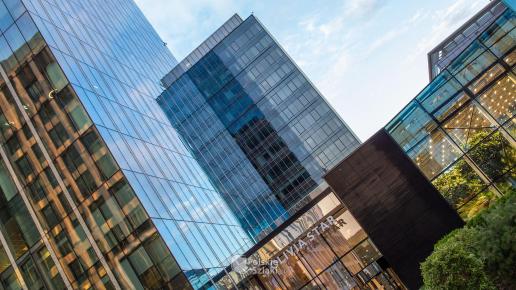
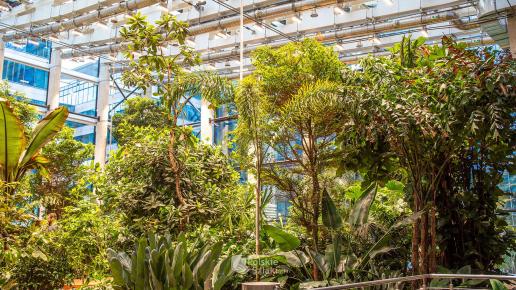
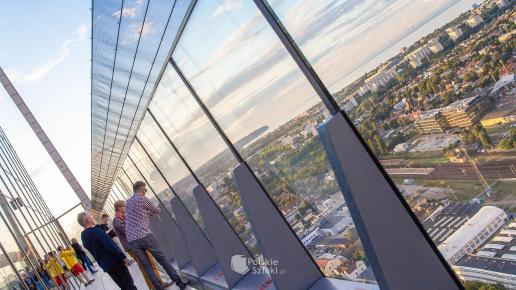
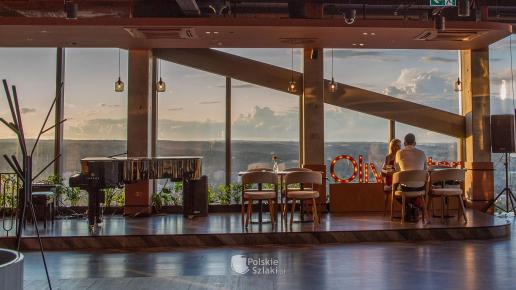
7. Piwna Street in Gdansk
Piwna Street is, next to Mariacka Street, the second such charming street in Gdansk, with preserved in several places anterooms, gables and colorful tenement houses with narrow and high facades. A lot of pubs and vegetation, which adds to the climate of the place. Beer Street is adorned on one side by the famous St. Mary's Basilica, while the other side is closed by the magnificent Great Armory - an impressive edifice richly decorated. The city's armory was built in the 17th century and draws on Dutch influences. Today it is home to the Academy of Fine Arts.
Address: Piwna Street, Piwna Street, Gdansk
Great Armory, 6 Targ Węglowy Street, Gdańsk
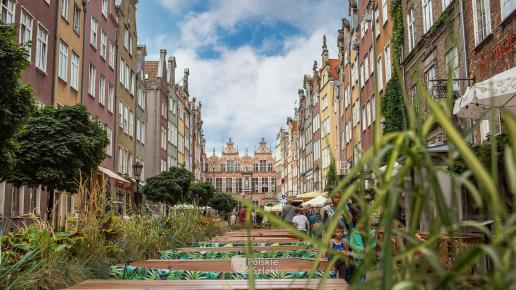
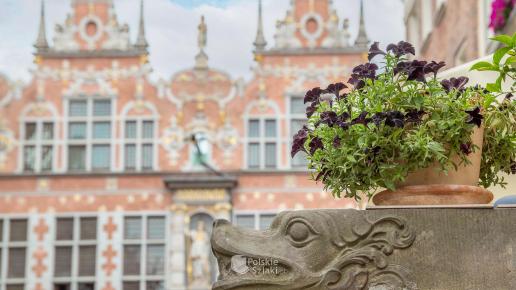
8. Granary Island in Gdansk
Granary Island is located in the Śródmieście district, on the Motława River. It is adjacent to Olowianka Island to the north. It is the former storage area of economic Gdansk, or the port on the Motlawa River. Around 1330 the first granaries of the Main City were built here, and it was here that representatives of different cultures and nations met in connection with the commercial contacts of Gdansk. Hence, in the old names of the gran aries there were many references to distant lands and their inhabitants. These included: Holland, Jerusalem, Lübeck, Hungary or Turkey. There were also references to exotic flora and fauna like the Parrot, Elephant, Whale, White Bear, Coffee Tree, Yellow Lion, Three Lemons and Palm Tree. At present, far-reaching work has been done on the revitalization of Granary Island, granaries have been erected here, which partly refer to the old buildings and partly represent the modern style, which, however, blends very nicely with tradition here. Granary Island is another trendy yet beautiful corner of Gdansk, with cafes, restaurants and hotels. The place is still developing.
Address: Granary Island, Chmielna Street, Stągiewna Street, Gdańsk
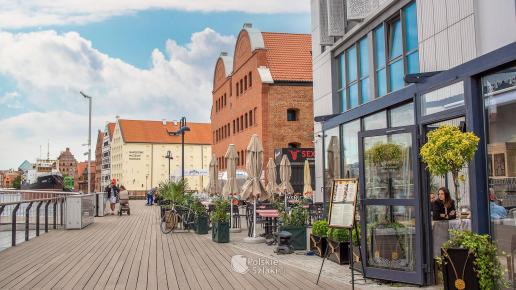
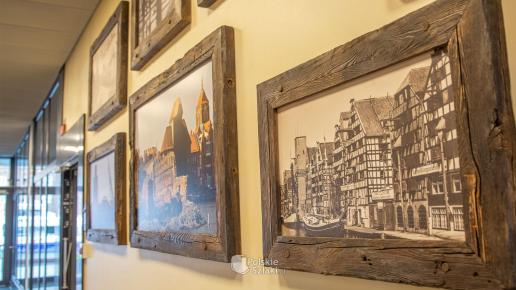
9. Neptune's Fountain in Gdansk
Neptune's Fountain or the former Neptune's Well has adorned Długi Targ since the 17th century, when this Roman god of the seas was eagerly used in fountains. Gdansk's famous Neptune is located in front of the beautiful Artus Court and delights tourists. There is hardly a person who would pass by here and not take a picture. The elaborate fountain fence is decorated with the city's coat of arms and Polish eagles. The architecture around it is so wonderful that it takes your breath away, and I would also add that there is a legend associated with Neptune, namely that it was Neptune who first created the famous Gdansk Goldwasser liqueur. This is because he was annoyed that tourists were throwing coins into the fountain and smashed them with his trident, and these combined with water gave a delicious drink 🙂
Address: Neptune's Fountain, Długi Targ Street, Gdańsk
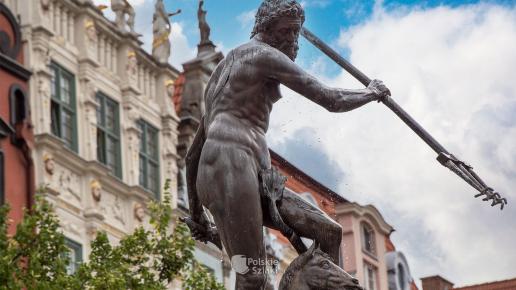
10. St. Mary's Basilica in Gdansk
The famous St. Mary's Church in Gdansk is an extremely impressive Gothic church of the Assumption of the Blessed Virgin Mary - one of the largest brick churches in the world. It has a volume of 155,000 cubic meters and a tower about 80 meters high!You can climb it up 400 stairs!The construction of St. Mary's Basilica in Gdansk began in the 14th century, or more precisely in 1343, and lasted for more than 150 years. The façade has retained its Gothic austerity to this day, while the modest interior boasts magnificent monuments - valuable works of Gothic and Baroque art. The most impressive is the giant astronomical clock composed of three parts. It was built in the 15th century by master Hans Duringer of Toruń. Also impressive is the main altar - the work of master Michael Schwarz of Augsburg. St. Mary's Basilica is called the crown of the city of Gdansk.
Address: St. Mary's Basilica, 5 Podkramarska Street, Gdansk
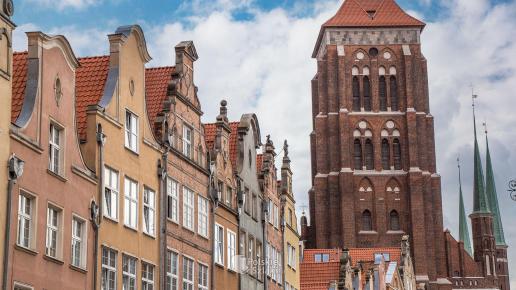
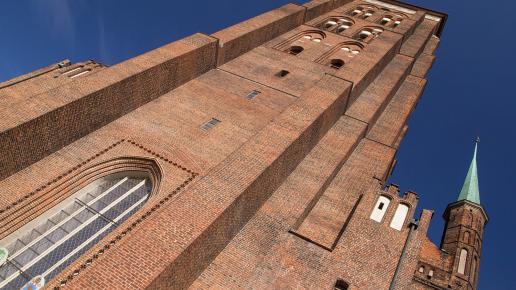
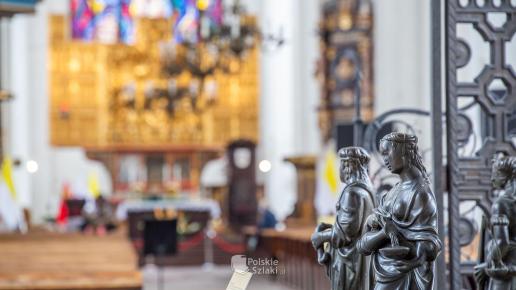
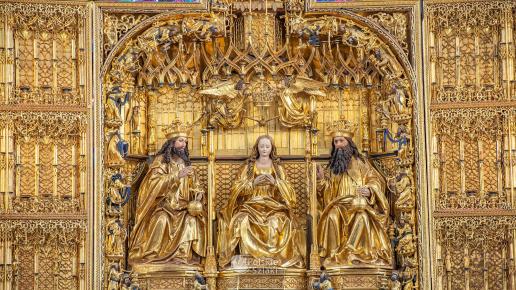
11. Oliwa Cathedral in Gdansk
Oliwa is a secluded and charming district of Gdansk, located at the foot of the Tri-City Landscape Park. Here you will be delighted by a post-Cistercian park from the 18th century, the heart of which is Oliwa Cathedral. This is the Church of the Holy Trinity, the Blessed Virgin Mary and St. Bernard, built in the 13th century as a Cistercian temple. This Gothic basilica is the longest temple in Poland. It is built on a Latin cross plan and measures 107 meters in length. The interior is interesting, and the greatest decoration here is the famous 18th century rococo organ by Master Wulf. Organ concerts are held here every year.
Address: Oliwa Cathedral, 10 Cistercians Street, Gdansk
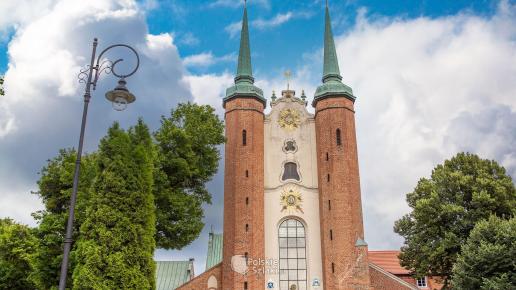
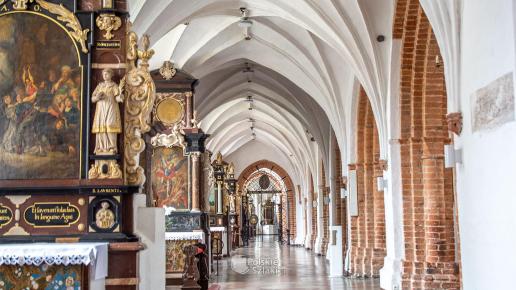
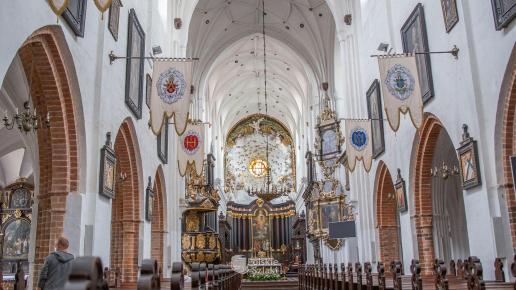
12. Old Town of Gdansk with the Old Town Hall
The centerpiece of the Old Town is the late 16th century Late Renaissance Old Town Hall - a brick building topped with a soaring turret. It is an example of Danzig Mannerism. Today, the beautiful historic interiors house the Baltic Sea Cultural Center. Near the city hall stands a monument to astronomer Jan Hevelius. He lived on this street and was a councillor in the 17th century, attending city council meetings in this town hall. In the Old Town, it is worth noting St. Catherine's Church. It is here, in turn, that the tomb of Jan Hevelius is located. The temple dates back as far as the 13th century, and the tower, more than 70 meters high, now houses a carillon - a replica of a 16th-century instrument composed of 50 bells. It is the largest carillon in this part of Europe. It reportedly weighs more than 17,000 kilograms. Near St. Catherine's Church overwhelms with its size the Great Mill - a witness to medieval technical architecture. It has a huge gabled roof and had 18 water wheels. A fountain with multicolored night illumination has been created at the mill.
Address: Old Town Hall, 33/35 Korzenna Street, Gdansk
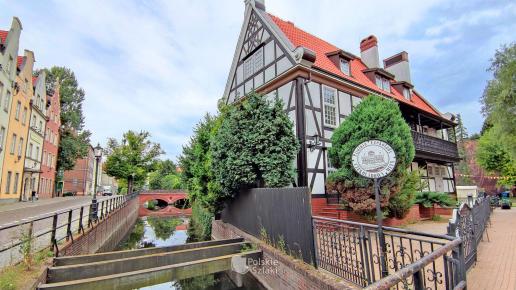
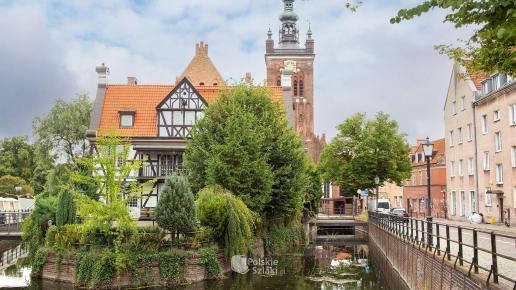
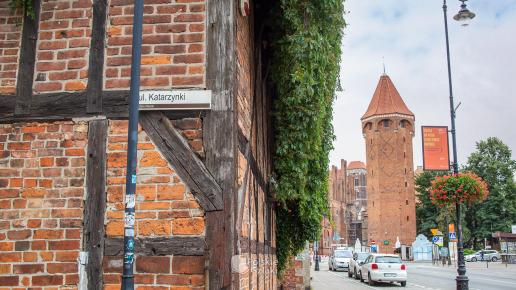
13. Gdańsk Lighthouse
The Gdańsk lighthouse stands in the New Port. It is a late 19th century building and one of the most beautiful lighthouses on the Polish Baltic coast, or even the entire Baltic coast. It was here that World War II began. In 2004 the lighthouse was opened to tourists, and inside you can admire historical optical equipment and a lighthouse exhibition. From the top you can enjoy a beautiful panorama of the Port of Gdansk, Westerplatte and the Gulf of Gdansk. In addition, in 2008 the 19th century time ball on the Lighthouse was renovated, which shows the time several times a day with an accuracy of 1 second of error for 200 thousand years. It's worth setting your watch here 🙂
Address: Lighthouse New Port, 6a Przemyslowa St., Gdansk
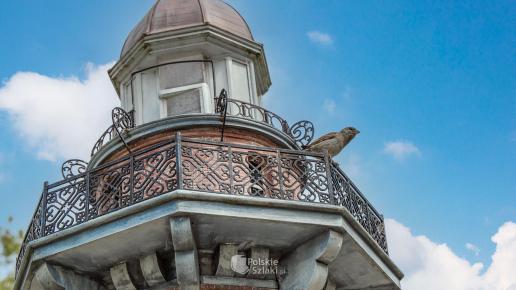
14. Zoo in Gdansk
Another attraction of Gdansk is the beautifully located Zoo in Gdansk Oliwa. It is located at 3 Karvinska Street, it is worth a look here, especially when visiting Gdansk with children. The zoo was established in the 1950s and initially showed animals donated by locals, mainly sailors bringing them back from distant voyages. Back then it was mainly monkeys and parrots. Today you'll find about 200 species of animals, including toddlers, which in a special small zoo allow close contact with the pets.
Address: Zoo, 3 Karwinska Street, Gdansk
15. Amber Museum in Gdansk
The unique Amber Museum was for years located just off the Royal Route in Gdansk's Main Town, but is now housed in the friendlier and more spacious interiors of the Great Mill in the Old Town. Gdansk definitely deserves the title of World Amber Capital, as for centuries both jewelry and utilitarian items have been produced here from jantar - the gold of the Baltic Sea. The museum offers a modern and multimedia exhibition, which will make everyone aware of the extraordinary history of amber. Among the exhibits you will see amber nuggets from all over the world, plants and animals embedded in them, as well as masterpieces of the old masters and a collection of modern art.
Address: Amber Museum, Wielkie Młyny 16, Gdańsk
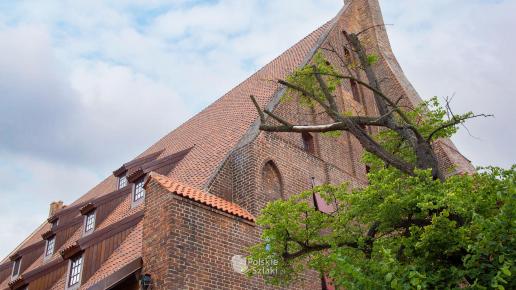
16. Wisloujscie Fortress in Gdansk
Wisloujscie Fortress is located on the Dead Vistula River, in the northern part of Gdansk. It is a unique monument inscribed on the UNESCO World Heritage List and is today a Branch of the Historical Museum of the City of Gdansk.
Address: Wisłoujście Fortress,Stara Twierdza 1, Gdańsk
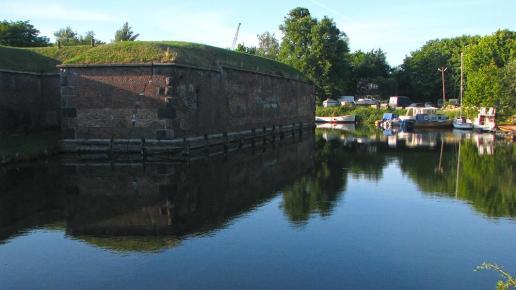
17. Motlawa rivulet in Gdansk
The Motława tide is the former moat and estuary arm of the Motława River, flowing around the bastions of Gdansk's Lower City fortifications. Today, it is a beautifully revitalized area that has become a great place for walking, with history in the background. A walking and recreational park has been created here, hiding former forts, such as Bastion Gertruda after restoration. Nearly 10 km of walking and bicycle paths delight residents and tourists.
Address: Motława Tidal, Zawodników Street, Modra Street, Gdansk
18. Dominican Fair in Gdansk
Jarmark Dominikański is an annual celebration of the city. It is unbelievable even, but it has been organized in Gdansk since 1260! At the end of July and the beginning of August and usually lasts about 3 weeks. Today, during the fair, craftsmen, handicraft vendors, jewelers and hobbyists set up their stalls on many streets of the city. Throngs of tourists visit the city during this time.
Address: Jarmark Dominikański, Plac Dominikański and other streets, Gdansk
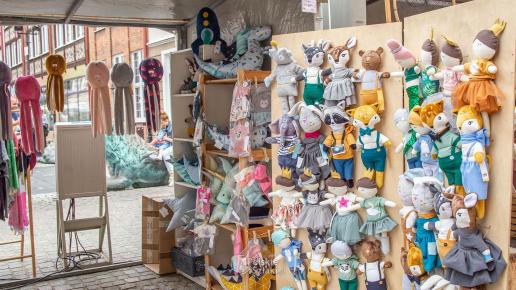
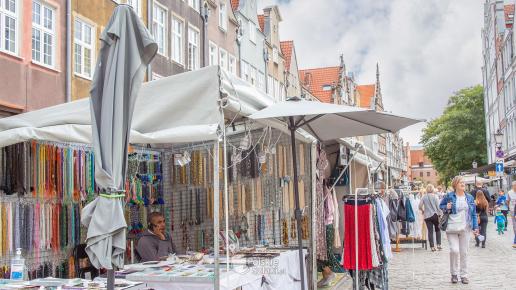
19. Westerplatte in Gdansk
Westerplatte is a symbolic place in Gdansk, in its northern part, at the mouth of the Dead Vistula River. The famous monument on Henry Sucharski Street stands here, and commemorates the unequal fight against the German occupiers in 1939. The shots from the German battleship Schleswig-Holstein, which were fired at Westerplatte on September 1, 1939 at 4:48 a.m., are considered the symbolic moment when World War II began. The nearly 7-day defense of the military depot by Polish soldiers was considered heroic, as Polish soldiers numbered about 200, while German soldiers numbered eight times as many.
Address: Westerplatte, Henryka Sucharskiego Street, Gdansk
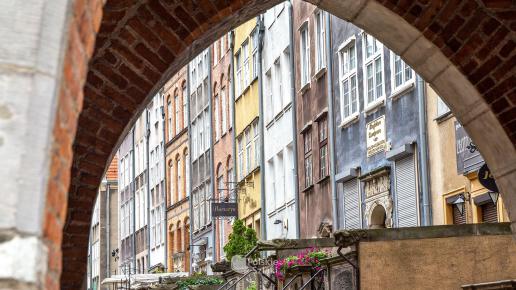
20. Sobieszewska Island in Gdansk
Sobieszewska Island is a mysterious island hiding World War II memorabilia. It is a seaside district of Gdansk, located about 15 km from the city center. It is one of the 3 islands of the Polish Baltic coast and the only Polish island created as a result of human activity. Since 1994, Sobieszewo Island has had the status of an ecological island, which is conducive to relaxing in nature.
Address: Sobieszewska Island, Sobieszewska Street, Turystyczna Street, Gdansk
Gdansk walking plan - our suggestion
Leaving the Main Railway Station in Gdansk, let's take the first steps towards the Old Town. Pass the Old Town Hall and see the romantic bridge over the Radunia Canal called the Bridge of Love. It opens a view of the Great Mill with the Amber Museum. Passing by it we come to St. Catherine's Church. It is the oldest temple in the city. Along Podmlynska Street we head towards Jack - the highest city tower. Further along Panska and Węglarska streets we reach the Great Armory, which looks towards the charming Piwna Street, leading to St. Mary's Basilica. Behind it is the Royal Chapel and the Dyke I square with the Four Quarters fountain and so many lions - a favorite place for children 🙂
But let's go back to the Basilica, because behind it is the beautiful St. Mary's Street with its unique anterooms. It is crowned by St. Mary's Gate facing the Long Embankment with a view of Motlawa River, Crane Gate and Granary Island, which you can get to by crossing a footbridge. It is worth a little stroll along it. Returning by the Green Bridge and passing through the Green Gate, we reach Dlugi Targ - the most famous street forming the Royal Route with Dluga Street. Here we recommend turning into Powroznicza Street. Here in the courtyard of the Radisson Blu Hotel stands a charming tenement house with a dog's paw print probably 600 years old. Along the uncrowded Ogarna Street you will reach the tasty W-Z patisserie - it is probably the best patisserie in the city. After a sweet snack along Ławnicza Street we will return to Długi Targ. We will go straight to the City Hall, Neptune's Fountain and Artus Court. Dluga Street will lead us to the Golden Gate and further to the Executioner's House, the Prison Tower and the Upland Gate. Here you can end your walk or still enter the Forum Shopping Center, where the water of the Radunia Canal flows inside, and the outdoor terrace commands a nice vantage point on Gdansk. Of course, you can also eat something. The entire walk is about 4 kilometers.
See our ranking Most beautiful cities in Poland with Gdansk
Gdansk - the most beautiful city in Poland
In my humble opinion, Gdansk is the most beautiful city in Poland. We come from the south of Poland and I often hear the question, which city is the prettiest - Cracow or Wroclaw? Then I answer - Gdansk and usually I am met with astonishment, although it happens that people applaud such a statement 🙂 I have carried Gdansk in my heart since I first saw it, yes, both Krakow, Wroclaw, and several other cities in Poland delight, but it is Gdansk that stirs up the greatest emotions in me. Its amazing location, its over-priced architecture, its skillful blending of old and new, its constant striving to improve its image, and moreover, its considerable distance from my Tarnowskie Góry make me never tire of this city and I always come here with great joy!

Video with the most beautiful attractions of Gdansk
Check out our video of Gdansk's most beautiful attractions in our opinion.
Where to eat in Gdansk?
Gdansk is such a popular city that you can find cafes, restaurants and hotels and other accommodations on almost every street. If you're planning a visit to the Hevelianum, I recommend you visit the Wozownia there. O jacia, what good food there was. Delicious soups, main courses and desserts too. I tasted stuffed cabbage with wild boar, fantastic, while Luke ate delicious duck, I know because I tasted it, as always 😉 And to this I took borscht, it looked beautiful and cheesecake - a fairy tale. The meringue with fruit was also tasty.
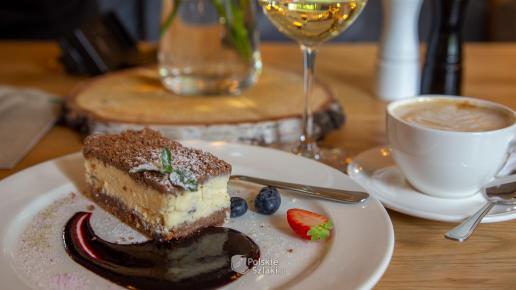

Another very trendy place to eat is the Vidokowka restaurant in Olivia Star, in the Gdansk Oliva district. It is located on the 32nd floor of this skyscraper and is also a wonderful vantage point; there is a fee to enter, but the place is unique and tasty.
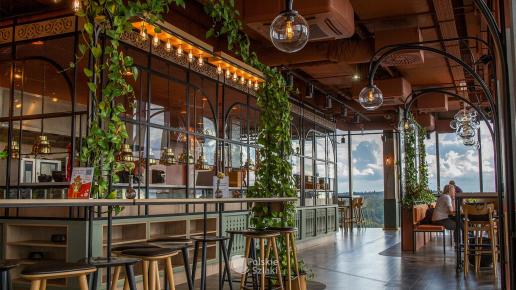
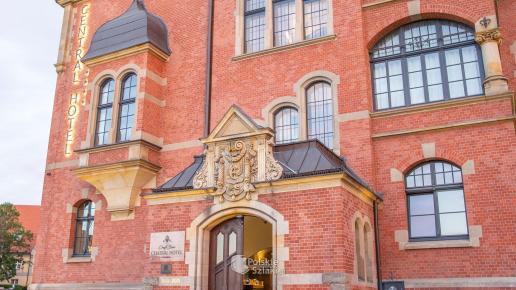
There are also countless cafes in Gdansk, such as those on the Motlawa River or in the Shipyard, where it is worth going even in the evening, to one of the many clubs that offer beautiful views of nighttime Gdansk. We also recommend a patisserie, such as W-Z on the right Słodownik Street, near Ogarna, quite close to Dlugi Targ. It doesn't look impressive, but the smell leads to it from afar. In addition to delicacies, melt-in-the-mouth doughnuts or delicious yeasty pastries, you will taste here Danzig rusks, which accompanied sailors on the voyage. Very tasty, also today perfect for traveling 🙂
Accommodation in Gdansk
There are plenty of places to choose from, we slept at Hotel Central, conveniently located right at the train station, which was perfect for us, as we were exceptionally just going to Gdansk by train. The hotel is amazing, the interiors are like those of an old tenement house, wonderfully arranged in a beautiful modern style, plus each room has some sort of curiosity, ours, for example, had a beautiful glass window leading to the bedroom, while the attic room had a mezzanine with a beautiful wrought iron staircase. The Craft Beer Central Hotel is not cheap, but surprisingly beautiful and comfortable, plus it hides a brewery with a variety of beers. Downstairs you can taste them, straight from the barrel.
Z góry dziękujemy!
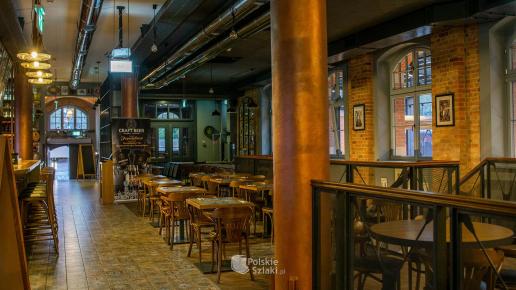
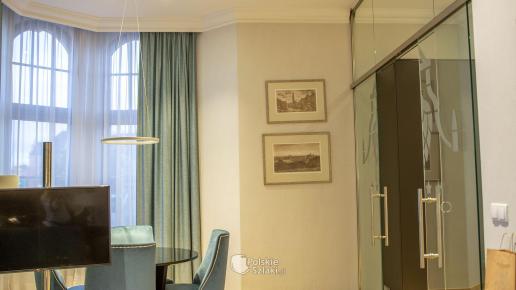
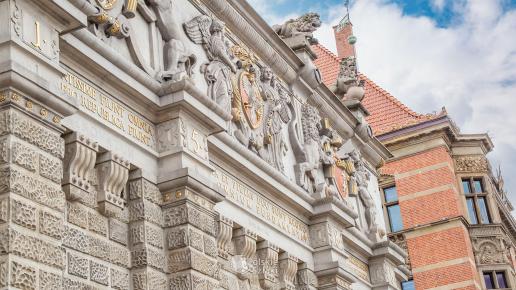
Pomeranian Tourist Card
With the Pomeranian Tourist Card and the Metropolia package, free admission to about 20 attractions throughout the Tri-City and its surroundings awaits, including museums, the Sopot pier or the Gdynia Aquarium, without having to buy multiple tickets. In addition, the card offers discounts at restaurants and other partner establishments, as well as on attractions such as a cruise to Westerplatte. In addition, you don't have to worry about public transportation tickets - buying the Communication package gives you free rides throughout the Tri-City. You can buy the card, for example, at the Tourist Information Point in Brama Wyżynna near Długa Street (2a Waly Jagiellońskie Street). More at: https://kartaturysty.pomorskie.travel/
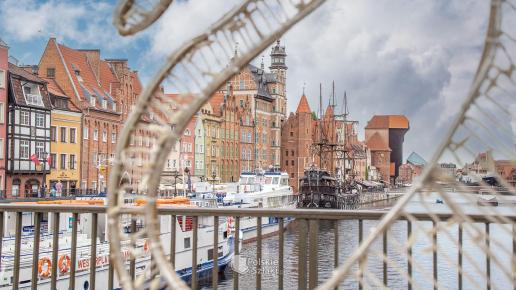
Getting to Gdansk
Getting to Gdansk by car is not likely to be a problem. The A1 highway crossing our country from south to north leads here. It's not very convenient to get here from Warsaw, as the S7 expressway is just being built and designed. The situation is similar with access from Szczecin - here we are waiting for the completion of the S6.
Getting around the city by car is not the most pleasant - as it is in any large city. Therefore, it is worth thinking about using well-developed public transportation. You can buy tickets for them in popular mobile applications such as Jakdojada.
Gdansk has a paid parking zone divided into several sectors. In some it is in effect from Monday to Friday from 9 am to 5 pm, in others from 9 am to 8 pm every day, so check it carefully. Prices start from about 4 zloty per hour to about 6 zloty/hour. Below I add a map of paid parking.
You will have no problem getting hereby train, as Gdansk is very well connected with almost every major city in the country. Mostly direct connections are available.
There is also an airport in Gdansk, so you can also get here by plane. You can get from the airport to the center of Gdansk by public transportation in the form of rail or bus (line 210). Such a trip is about 40 minutes.
History of Gdansk
I have already mentioned that Gdansk boasts a thousand-year history, a noble age! Its location at the crossroads of cultures, countries and traditions, as well as the commercial nature of the city, have given Gdansk a very complicated and turbulent history. Archaeologists have come across traces that tell us that a fishing settlement on the Motlawa River existed as early as the 7th century. It was here that the heart of the city and the most important market in the port developed. Today Gdansk does not have a market as such, but if one were to look for one, it is here. In 999 the first mention of Danzig appears, and the Latin name meant as much as marshland, because Danzig lies slightly below sea level. That's probably why the Dutch feel at home here and Danzig is often called a second Amsterdam. All the buildings here stand on stilts, poles that used to be wooden, but are now steel.
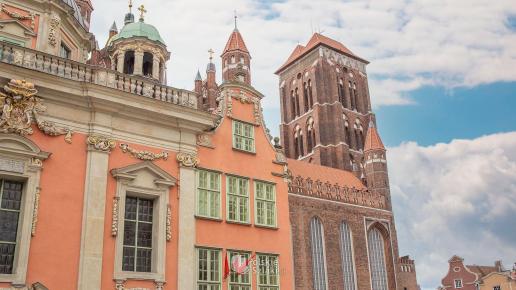
Golden Age
After the victorious expeditions of Boleslaw the Wrymouth a castle was established here, this was in the 12th century. In the Middle Ages Gdansk belonged to the Hanseatic League - an association of cities enjoying cultural and economic community. In 1308 the Teutonic Knights captured the city and ruled it until 1454, when Gdansk returned to the Polish Crown. The 16th and 17th centuries to the Golden Age of Gdansk, when it was one of the richer if not the richest city in the Polish Crown. Interestingly, the local gold of the Baltic - amber, was worn by kitchen girls then, while Gdansk women preferred to wear pearls, sapphires diamonds or gold. Today, amber ornaments can cost crores, but they also delight with their appearance. It is not for nothing that Gdansk is considered the Amber Capital of the World.
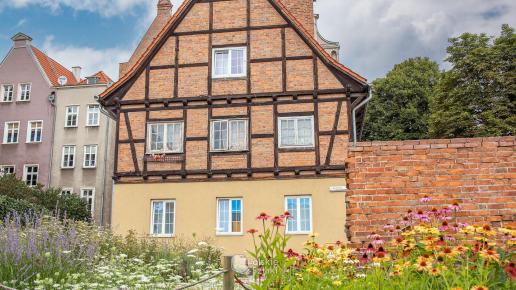
War damage
During the Partitions of Poland, Gdansk fell into Prussian (later German) hands, and during the interwar period Gdansk became a Free City. The desire to annex the city to the Third Reich became one of the reasons for the outbreak of World War II. It was here, at Westerplatte, that the first shots of war were fired. This took place on the morning of September 1, 1939. March 1945 brought destruction to the city. The destruction of the war took away about 90% of the city's historic downtown buildings. At the time, Danzig's ruined downtown was no different from destroyed Warsaw. After the war, Gdansk was annexed to Poland and elaborately rebuilt, based on old engravings, paintings or photographs.
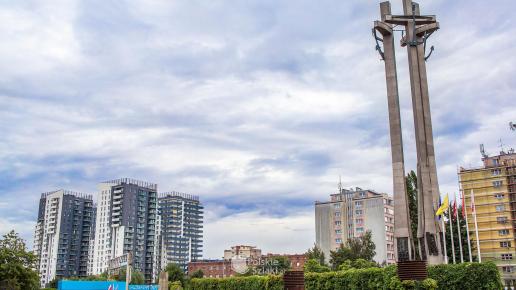
Solidarity
Gdansk has always been important and valued. The same was true at the end of the 20th century. It was here in August 1980 that Solidarity was founded - the first trade union in the Eastern Bloc independent of the government, and the social movement that led to the collapse of the communist system on the eastern side of the Iron Curtain. The leader of Solidarity was an electrician from the Gdansk Shipyard - Lech Walesa - later President of Poland. For years he had his office in the Green Gate with a wonderful view of the Long Market. Today you can meet him in his office at the European Solidarity Center, next to the Gdansk Shipyard.
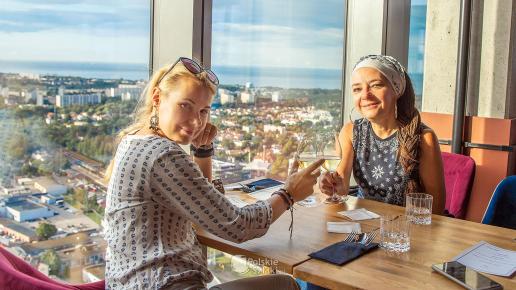
Symbols of Gdansk
Over the centuries the symbols of Gdansk have accumulated a bit, it is certainly the medieval Crane - the largest crane in Europe, which impresses tourists to this day. The monument at Westerplatte is also a symbol. New symbols of Gdansk have recently become Granary Island, magnificently revitalized, to which the fun of the Tri-City has moved, and Olivia Star - one of the tallest buildings in Poland with a spectacular observation deck on the 32nd floor.
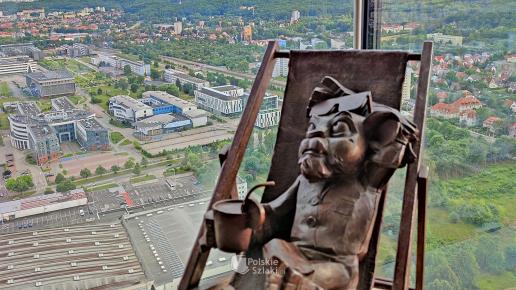
A historic symbol of Gdansk is also the lion - a symbol of royal power, given to the city by King Casimir Jagiellon. Lions can be seen in the city's coat of arms, but also appear in the city in decorations of one kind or another. The Lion Hevelion should also be mentioned. This is the city's new mascot, named after the famous Gdansk astronomer Jan Hevelius. There is even a Gdansk Lion Hevelion Tourist Trail created in Gdansk, how does it work? Hiking with the Lion of Hevelion is fun for mainly the youngest, but it will be fun for everyone. The trail is part of the outdoor games featured in Visitgdansk's Questy app. By downloading it and activating the location function on your phone, you will get a range of interesting information approaching the Hewelion sculptures dotted around the city. And where can you find them? For example, on the viewing floor of the Olivia Star, at the ZOO, at the Energa Gdańsk Stadium, on the pier in Brzeźno, at the Hevelianum, at the Great Mill, on Ołowianka, on Długi Pobrzeże or Długi Targ.
